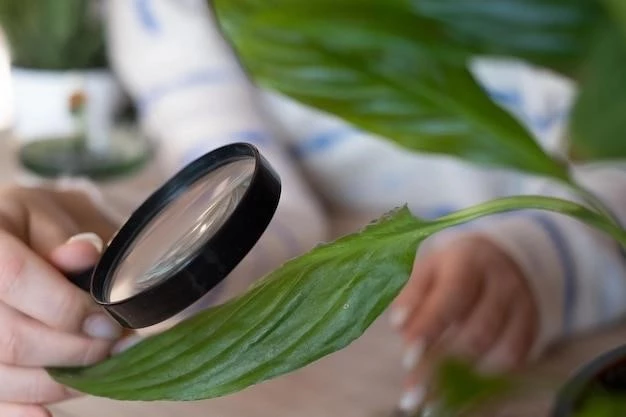Pemphigus is a potentially life-threatening autoimmune disease that causes skin blistering due to antibodies targeting desmogleins in the epidermis, leading to scaly or crusted erosions.
Unlike pemphigus vulgaris, pemphigus foliaceus mainly affects the skin without mucosal involvement.
Overview of Pemphigus Foliaceus
Pemphigus Foliaceus is an autoimmune blistering disease primarily affecting the skin, distinct from other pemphigus types by its lack of mucosal involvement. It manifests as superficial blistering and erosions with an erythematous base, commonly on the trunk, face, and scalp. Diagnosis involves skin biopsy and direct immunofluorescence tests to detect autoantibodies. Treatment includes corticosteroids, immunosuppressive therapies, and topical agents, tailored based on disease severity.
Clinical Presentation and Diagnosis
Pemphigus Foliaceus typically presents with superficial blistering, scaly or crusted erosions, and an erythematous base primarily on the trunk, face, and scalp. Diagnosis involves skin biopsies to detect IgG autoantibodies using direct immunofluorescence and serological tests for desmoglein autoantibodies.
Clinically, the lesions in Pemphigus Foliaceus are more superficial compared to Pemphigus Vulgaris, with a distinctive lack of mucosal involvement. It is crucial to differentiate between the various forms of pemphigus based on their clinical features, autoantigens, and laboratory findings for accurate diagnosis and appropriate management strategies.
Causes and Risk Factors
Pemphigus Foliaceus is caused by the production of antibodies targeting desmoglein-1 in the epidermis, leading to skin blistering without mucosal involvement. Risk factors may include genetic predisposition and environmental triggers that can exacerbate the autoimmune response.
Autoimmune Nature of Pemphigus Foliaceus
Pemphigus Foliaceus is an autoimmune blistering disease where the immune system produces autoantibodies targeting desmoglein-1, leading to skin erosions and crusting without mucosal involvement. The pathogenesis involves a breakdown in the adhesion of keratinocytes in the upper epidermal layers due to the autoantibody activity, resulting in the formation of superficial blisters.

Treatment Options
When managing Pemphigus Foliaceus, treatment strategies often include systemic or topical corticosteroids, immunosuppressive therapies like rituximab, and other agents based on disease severity and response to initial therapies. A multidisciplinary approach with dermatologists and immunologists is essential for individualized treatment plans.
Management of Pemphigus Foliaceus
Effective management of Pemphigus Foliaceus involves a multidisciplinary approach with dermatologists and immunologists to tailor treatment plans. Utilizing systemic or topical corticosteroids, immunosuppressive therapies like rituximab, and other agents based on individual disease severity and response to initial treatments is crucial. Regular follow-up appointments and communication with healthcare providers are essential in monitoring the condition and adjusting therapies as needed.
Therapeutic Approaches
Traditional therapeutic options for managing Pemphigus Foliaceus include the use of systemic or topical corticosteroids, which are often effective in controlling symptoms. In more severe or widespread cases, additional immunosuppressive therapies like rituximab, plasma exchange, methotrexate, mycophenolate mofetil, or azathioprine may be required; Topical calcineurin inhibitors have also shown efficacy in certain situations. Consider a combination of tetracycline or doxycycline with nicotinamide for added benefit in some individuals. Regular monitoring and adjustments to treatment approaches are essential to address the dynamic nature of the condition.

Prognosis and Complications
Understanding the prognosis of Pemphigus Foliaceus is essential. While it can be managed with treatment, complications may arise if the condition is not adequately controlled. Regular monitoring and adherence to treatment plans can significantly impact the outcome and reduce the risk of complications.
Outcome and Long-Term Effects
Prognosis for individuals with Pemphigus Foliaceus can vary depending on the response to treatment and disease severity. With effective management, many patients can achieve remission and lead a normal life. However, long-term complications may arise, including skin scarring, infection from open sores, and side effects from immunosuppressive treatments. Regular monitoring and adherence to treatment plans are essential to minimize long-term effects and maintain overall skin health.
Prevention and Lifestyle
While it is not possible to prevent Pemphigus Foliaceus due to its autoimmune nature, maintaining good skin hygiene and promptly seeking medical attention for any unusual skin changes are crucial. Adhering to treatment plans, attending follow-up appointments, and communicating effectively with healthcare providers can help in managing the condition and minimizing its impact on daily life.
Preventive Measures for Pemphigus Foliaceus
While there are no specific preventive measures for Pemphigus Foliaceus due to its autoimmune nature, maintaining good skin hygiene and seeking prompt medical advice for any unusual skin changes are key. Adhering to prescribed treatments, attending regular follow-up appointments, and communicating effectively with healthcare providers can aid in managing the condition and minimizing its impact on daily life.
Research and Developments
Stay informed about the latest advancements in the treatment of Pemphigus Foliaceus. New therapies and research efforts are continuously improving management and outcomes for individuals with this condition. Keeping up to date with current developments will help you make informed decisions regarding your health and treatment options. Consult with healthcare professionals to explore the latest advancements in Pemphigus Foliaceus treatment.
Advancements in Pemphigus Foliaceus Treatment
Recent advancements in the treatment of Pemphigus Foliaceus have focused on developing targeted therapies to minimize disease activity and reduce the need for long-term corticosteroid use. Biologic agents like rituximab have shown promising results in managing refractory cases. Additionally, research is ongoing to identify novel immunomodulatory treatments with better efficacy and safety profiles. Collaborating with healthcare providers knowledgeable about these advancements can help in exploring the most suitable and effective treatment options for individual cases of Pemphigus Foliaceus.
